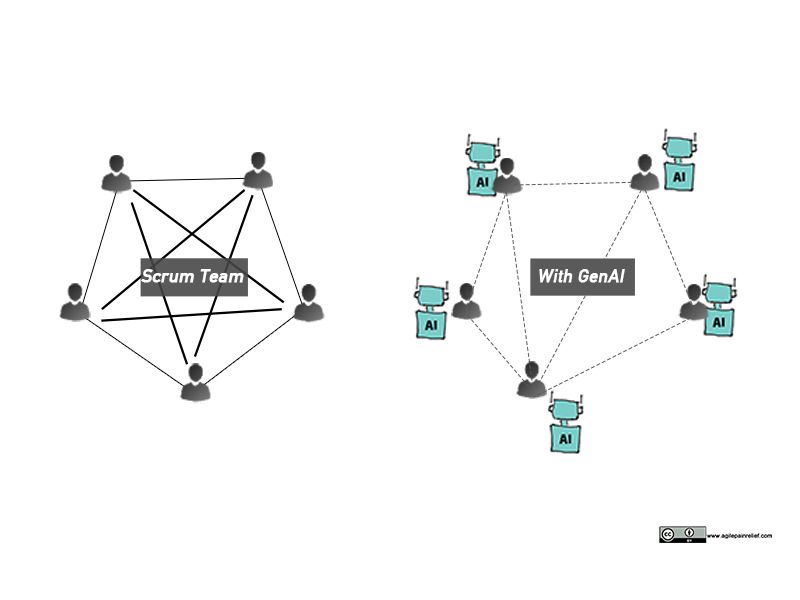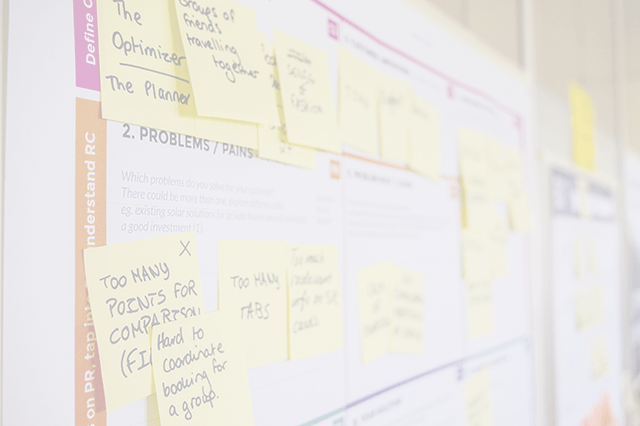The Human Cost of GenAI
Generative AI is helping people be more productive (sometimes). Of course, if you’re worried about defects or accuracy, it’s not all that it’s cracked up to be but, sure, for things like reviewing writing for grammatical errors, prototyping features and applications, and gathering data when accuracy isn’t essential, it’s helpful. It also speeds discovery and brainstorming (sometimes[1]).
So, yes, it’s (sometimes) helping people be more productive and there are (some) places where it does make (some) things get done faster.
But forget about speed for a minute, which is what all the focus seems to be on, and let’s put some thought into the consequences of all this so-called productivity. The human cost.
(*Caveat: the research in this area is new and will evolve.)
Productive But Less Motivated
From the Harvard Business Review: “Research: Gen AI Makes People More Productive—and Less Motivated”[2] and [3]
In this study, people who used GenAI for tasks like writing emails, social media posts, and brainstorming were more productive. But this productivity came at a cost.
As GenAI takes over the demanding tasks, people report lower intrinsic motivation and increased boredom. This leads to disengagement and dissatisfaction with work and, if unchecked, burnout.
Using the ARC Motivational model, we know that we need to feel competence in doing our work. The use of GenAI is taking away from that sense of effectiveness and confidence, leaving people to ask: Why am I here?
Loss of Control and Connection
Employees who excel with AI tools are twice as likely to consider leaving their organizations, pointing directly to the pressure of their overwhelming workload.
Upwork Research Institute surveyed over three thousand people to understand how GenAI is affecting people at work. [4] Since it is a survey, this is self-reported information and not a rigorously designed experiment, so we need to be careful about the strength of the conclusions we draw.
Adam described his company’s owner as someone who “thinks every new AI function will propel us to the next level with minimal effort,” a mindset with which he strongly disagrees. … the challenge wasn’t resistance to AI but rather overenthusiasm without a grounded understanding of what AI can and can’t do.
Many organizations are mandating the use of GenAI to increase productivity, without considering the broader consequences. When poorly implemented, these mandates lead to the feeling that we have no control or agency in the work. Even when the use of AI isn’t imposed, people report that they feel less in control if the tool is doing many of the tasks for them.
Autonomy is central to both the ARC and SCARF motivational models. As humans, we need to feel that we have choices and agency. The use of GenAI is reducing that for many workers.

Loss of Connection with Others
This finding was the most surprising. The heaviest users of AI come to see it as a teammate; in many cases, they report they’re more polite to it than their real colleagues. In turn, they appreciate the AI for being more empathetic and non-judgmental than their human colleagues.
When we would rather turn to a GenAI tool than our teammates for help, this undermines the social fabric of the team.
Group cohesion is a key variable of effective work teams. It is often conceptualized as consisting of social cohesion, task cohesion, and individual attraction to the group. We generally speak of teamwork when all three of these are present. Otherwise, it is just a group of people occupying the same (virtual) space.[^5]
So the more we rely on GenAI to replace our teammates, the weaker the team itself becomes. It also negatively affects us as individuals when we diminish relatedness and connection with our colleagues. The SCARF motivational model emphasizes a need to connect with other people, not with Generative AI tools.
Burnout
Lacking control and social connection, people are getting less satisfaction from their work. Hence, there is a rise in both burnout and people leaving workplaces.
What Can We Do?
GenAI isn’t going away, so we have to look into reducing the damaging effects.
For teams that are already practicing some flavour of Agile, most of this isn’t a surprise. Scrum has always been focused on building effective teams and increasing the use of GenAI requires us to put emphasis on the principles of this game.
Consider:
- Talk with your team about the problems with loss of control and human connection.
- Focus on increasing collaboration. Try Pair Programming or Ensemble Programming.
- Run small experiments around the use of AI, where the team set explicit exceptions and parameters. The goal is to design experiments that allow us to make decisions about if/when/where we’ll use it as a tool, based on data rather than on hype or perception, which can be flawed.
- Give team members back their automony. Let them see where GenAI is beneficial to them, and where it comes with a cost, and let them decide usage.
- To address loss of purpose, go back to the beginning. Effective teams have collaboratively agreed on:
a) Product (or Team) Vision for where they’re going in the next few years,
b) Strategy for the focus of their work in the next 4-6 months to support the Vision, and Story Maps or similar to visualize that,
c) Product Backlog and Sprint Goals so team members see, day to day, that their work is an important part of achieving a bigger purpose. - Use AI to help reduce the drudgery instead of replacing the creative work.
- Try any other things that help the team members increase their psychology safety and sense of belonging. This is part of the playbook, we call Effective Scrum.
AI is just another tool in the list of options we have to help us with work. The difference is that it is having larger social effects than tools we’ve used in the past. As we learn and understand the effects of GenAI —and as the tools themselves evolve— we can lean in to our Agile toolset to help reduce uncertainty and fear and ensure that our people thrive as our toolset changes.
Footnotes
- Artificial Intelligence Drug Research Hype - The Globe and Mail
- Generative Artificial Intelligence Makes People More Productive and Less Motivatied - Harvard Business Review
- Original Research Paper - Human-generative AI collaboration enhances task performance but undermines human's intrinsic motivation
- From Tools to Teammates Navigating the New Human-Ai Relationship
- In Depth: How Social Cohesion Shapes Teamwork and How to Improve It
Image attribution: Agile Pain Relief Consulting (August 2025)

Mark Levison
Mark Levison has been helping Scrum teams and organizations with Agile, Scrum and Kanban style approaches since 2001. From certified scrum master training to custom Agile courses, he has helped well over 8,000 individuals, earning him respect and top rated reviews as one of the pioneers within the industry, as well as a raft of certifications from the ScrumAlliance. Mark has been a speaker at various Agile Conferences for more than 20 years, and is a published Scrum author with eBooks as well as articles on InfoQ.com, ScrumAlliance.org and AgileAlliance.org.
